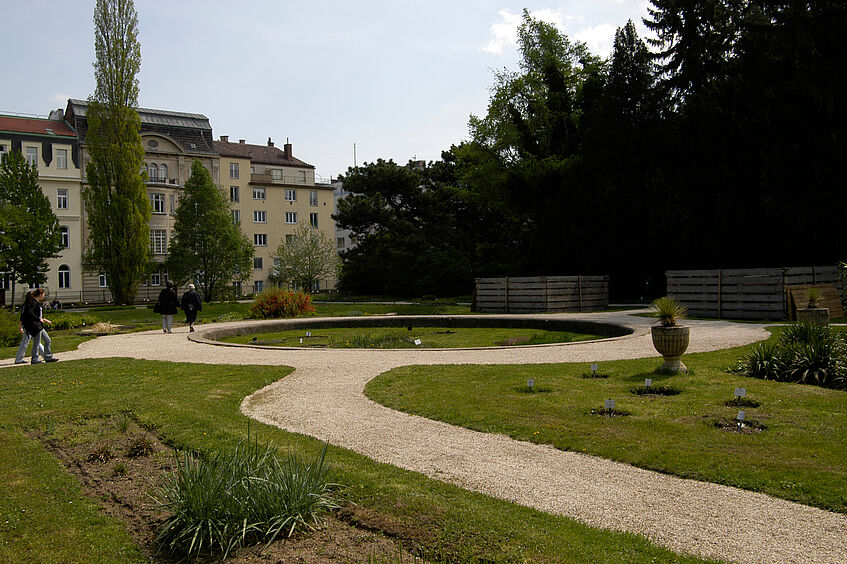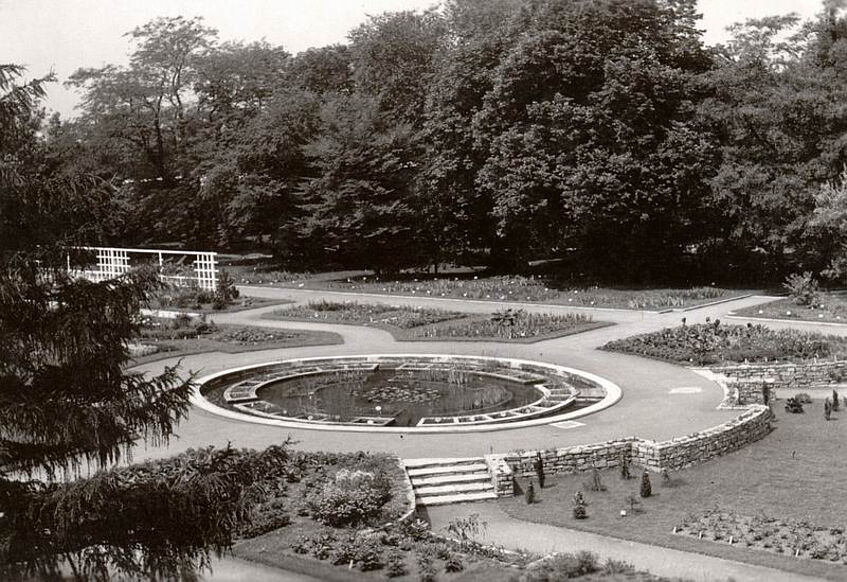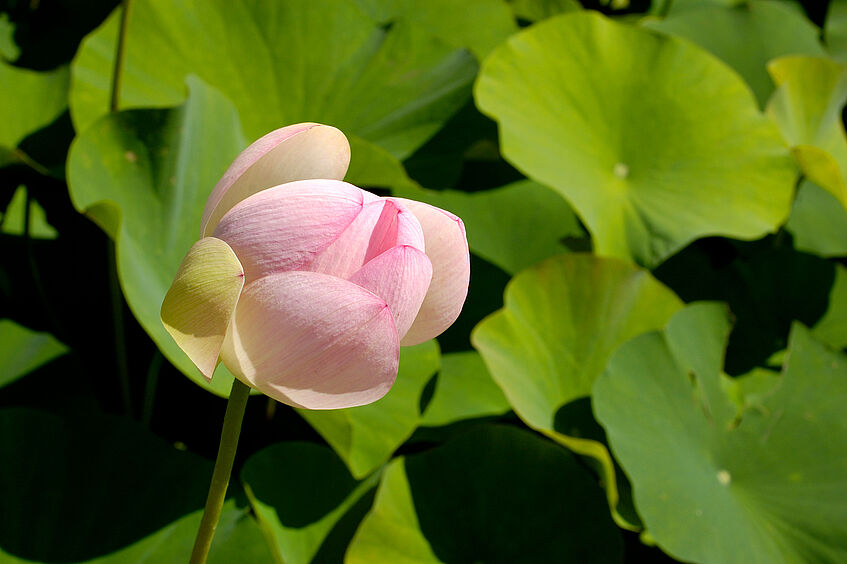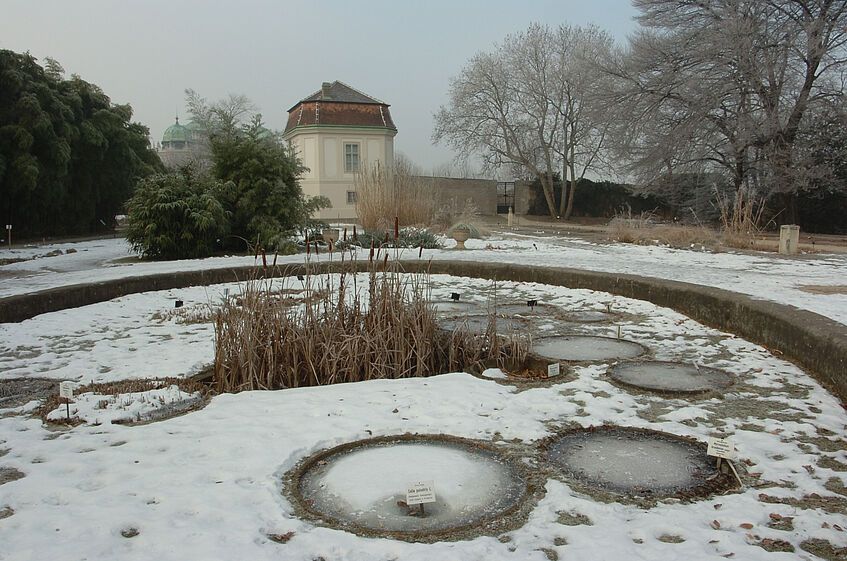Water basins and ponds

Wasserbecken © BGUW_R. Hromniak

Schmuckbecken in den 30er-Jahren © BGUW

Nelumbo nucifera – Indische Lotosblume © BGUW_R. Hromniak

Wasserbecken © BGUW_R. Hromniak
Although the Botanical Garden isn't blessed with larger waterbodies, it does feature eight water basins and smaller artificial ponds. All contain attractive plants and highlight interesting aspects, making them inviting destinations in their own right.
Five of the ten original historical water basins of the formal Baroque garden landscape from the early 19th century still remain today. Only one, namely that in the Host Garden in Group 41, is still preserved with its original stone setting. That water basin is both a Baroque, historical reference and marks a transitional break into the Garden's most recent and modern display group and research collection. The native yellow water-lily (Nuphar lutea) thrives in this basin, which is embedded in the so-called Pannonian Group.
The largest water basin in the university's Botanical Garden, located in Group 19, is especially interesting. This oval pool has marked the central point of the Botanical Garden ever since its origins in the early 19th century. The many reconfigurations of the surrounding areas have repeatedly drawn on this hub and highlighted its role. In the 1930s, this basin featured 9 round plant beds divided into 45 sectors (see historical photo). It offered excellent opportunities to display and propagate aquatic and marsh plants for the academic courses at the Institute of Botany and served as a source of information for the public. In the 1970s, the basin sprung a leak and had to be drained. Over the past years, the Botanical Garden, the University of Vienna itself, and the Federal Property Association (Bundesimmobiliengesellschaft – BIG) have made major efforts to ensure that this basin is renovated at the earliest possible date and can once again assume its original function.
Distinctive features of the other water basins and ponds:
Historical basin Group 4: water lily varieties and the European water-plantain (Alisma plantago-aquatica)
Historical basin Group 14: Indian (or sacred) lotus (Nelumbo nucifera)
Pond and streamlet in Group 37: summer snowflake or Loddon lily (Leucojum aestivum) – summer-flowering, large relative of the spring snowflake (Leucojum vernum), rare, highly endangered
Marsh basin Group 46: Bog arum (marsh calla) (Calla palustris) – native aroid (member of the Araceae) featuring a conspicuous white bract; threatened with extinction
